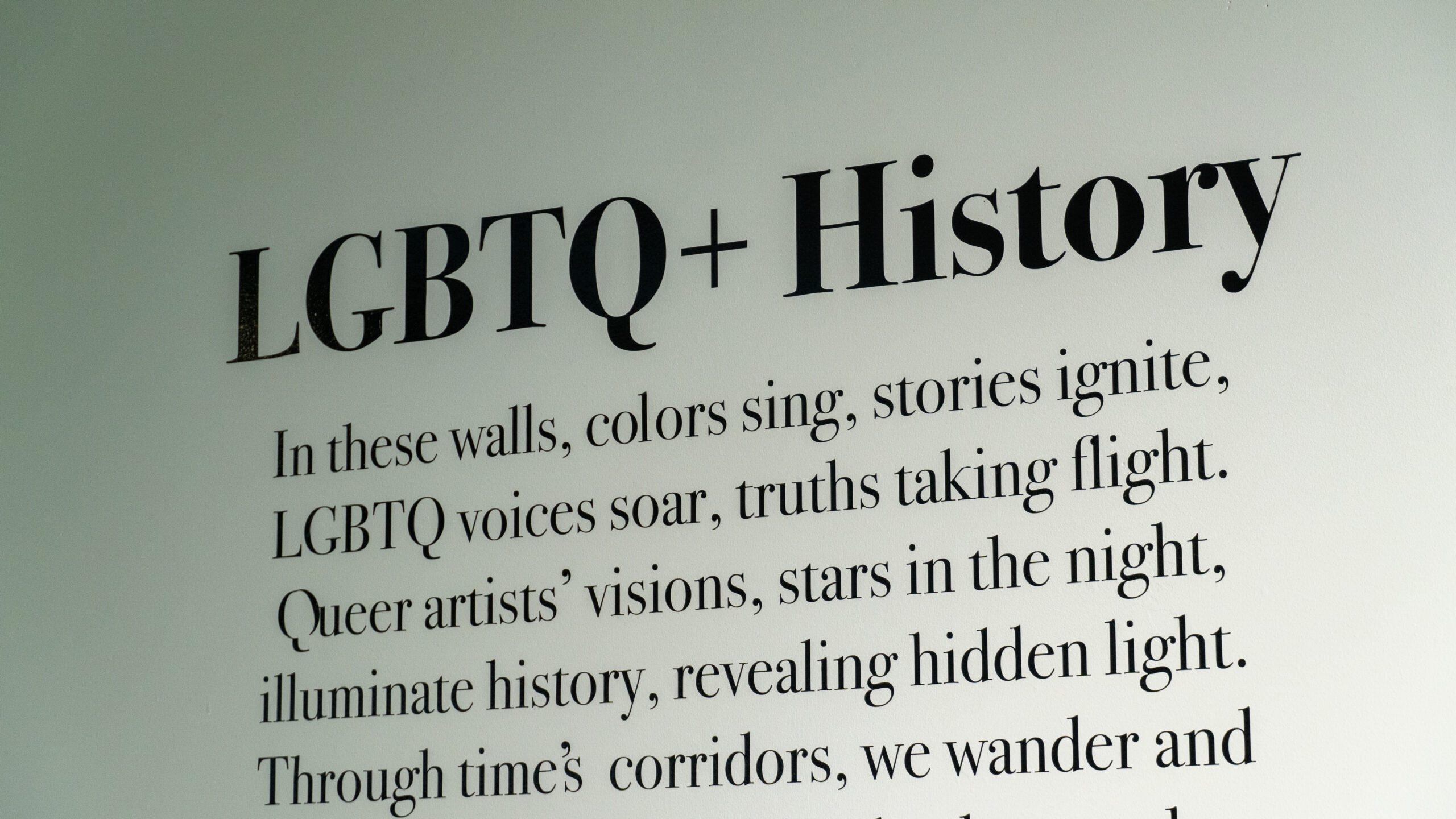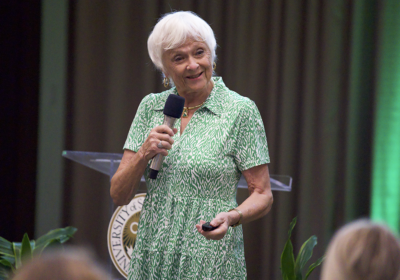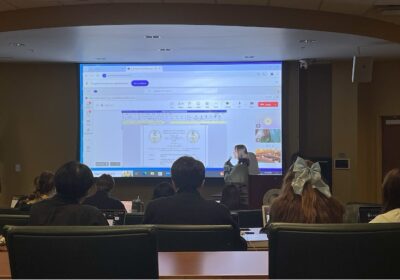LGBTQ+ exhibit draws in most students for an opening reception this semester

The LGBTQ+ History Month exhibit hosted by the Center of Student Involvement (CSI) and the Office of Multicultural Affairs (OMA) has drawn more students than any other Centre Gallery exhibit this semester based on its first week alone.
Every semester, the student-run Centre Gallery in the Marshall Student Center (MSC) hosts a panel of six exhibitions that rotate every two weeks. The LGBTQ+ History Month Exhibition – the fifth exhibition this semester – opened on Oct. 23 and will close on Thursday.
During its first week, the exhibition had 201 visitors. It also had the largest attendance for an opening reception this semester with 85 visitors, according to Kaylee Ayres, CSI student program coordinator. The remaining 116 visitors came during business hours.
The past four exhibits drew the following amount of visitors in two weeks:
- Eclectic Expression: 212 visitors
- Dark Corners of Progress: 264 visitors
- Threads of Belonging: 342 visitors
- Homecoming: 148 visitors
The increase in expected attendance is due in part to the fact that the event occurred during LGBTQ+ History month, according to Ayres.
The exhibit has an average of 34 visitors a day based on visitor survey results, putting it on track to be one of the highest-attended exhibitions this semester, according to Ayres.
Despite the increase, OMA had previously predicted low attendance for LGBTQ+ History Month events due to the turbulent political climate induced by recent restrictive legislation.
Related: Low attendance expected for LGBTQ+ History Month events, coordinator says
Featuring the work of 10 LGBTQ+ artists from the Tampa Bay-St. Pete area, the exhibit displayed numerous different art pieces including paintings, 3-D installations and graphic designs.
“For those artists, giving them a platform has given them visibility, and then for the general student body, it’s an opportunity to engage with people from a group they’re not as familiar with,” Ayres said.
Senior biomedical science major and avid digital artist Andy Pham redefines the LGBTQ+ “cause” as a series of social movements. To promote awareness about the community’s inequity, it’s important to highlight LGBTQ+ artists, according to Pham.
“It is nice for the curators to reserve a space for queer creators,” Pham said. “Rather than one LGBTQ+ ‘cause,’ we have many overlapping political, historical, and sociocultural interests, chief among which is striving against the dehumanization that ultimately motivates hate crimes, the erosion of our healthcare, and attacks on civil rights.”
The three pieces Pham contributed reflect these beliefs. The painting entitled ‘Flight,’ depicting a navy blue phoenix ascending toward a golden sun, served as a precursor to the other pieces.
Pham said the piece is meant to represent how many LGBTQ+ individuals no longer feel safe in Florida and plan to leave due to legislation aimed at marginalized communities.
“‘Flight — to defy gravity, to toss everything to the wind — represents a sort of ultimate agency and vulnerability. The vast majority of trans people in Florida have some contingency plan to leave the state; sometimes it feels like my community is a flock of birds, lifting away in slow motion,” Pham said.
Related: Some faculty, students consider leaving state due to DEI legislation
The vibrant color schemes and varying textures of the artwork reflect the broad spectrum of the LGBTQ+ community, according to freshman computer science major Esmeralda Garcia.
“It’s got a lot of personality and alertness and activism in the images, which summarizes the community,” she said. “I’m LGBTQ+ myself, so it’s nice to see the art shown and to see that side appreciated in the school,” Garcia said.
Artist Samuel James, who often creates art to highlight social issues, contributed a piece entitled “Growing into Myself,” which represented the intermediary stages of his gender transition.
“Art is a very humanizing medium, and shows the experiences we go through in life as well as the talent we have in creating the art,” James said.
Teresa Neiberger, junior history and English major, was enticed to attend the exhibit because it happened to fall during Asexual Awareness Week.
“The community is meant to be a whole bunch of individuals banding together in order to create a statement that we deserve to live. I feel like this exhibit does represent that in a really good way,” Neiberger said.
Neiberger said she appreciated the normalizing aspect of the exhibit. While it underscored the importance of “yes I am queer, I am part of the community,” it also acknowledged the universal experiences of life, she said.
“There’s another piece over there that’s about a young girl’s first love,” said Neiberger, “which is very sweet and I really like that because it shows that it was just naturally part of life, naturally part of progression.”
The exhibit is important as it allows artists to showcase their work from the exhibition while the audience gain exposure to the symbolic art, according to Ayres.
“With any kind of minority group or underrepresented population, just by providing them with additional visibility and providing a platform to be able to speak on a topic that they’re passionate about brings more awareness,” Ayres said.






